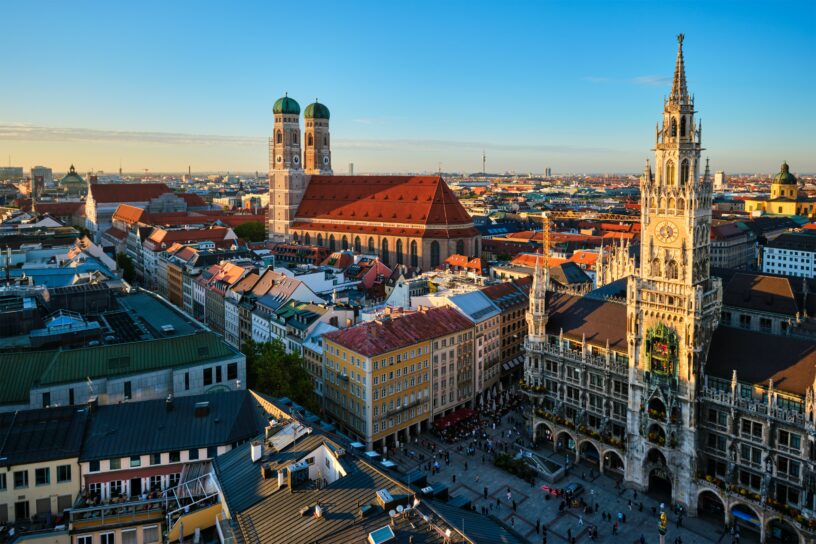The Importance of Renewable Energy and Solar Power
Renewable energy, including solar power, is essential for a sustainable future. It is a way to generate electricity without emitting harmful pollutants or contributing to climate change.
Solar energy is particularly valuable because it is abundant, widely available, and free to harvest. Moreover, the cost of solar panels has declined significantly over the past decade, making it more affordable for individuals and businesses to install them.
Solar energy can be harnessed in many ways: through residential rooftop installations, commercial building arrays, and large-scale solar farms that generate electricity for entire cities or regions. The flexibility of solar power makes it a viable option in both urban and rural settings.
The Increasing Popularity of Solar Energy Across the Globe
The use of solar energy has been growing rapidly across the globe. According to the International Energy Agency (IEA), solar power was the fastest-growing new energy source in 2020, accounting for about 45% of all new capacity additions worldwide.
China leads the world in solar energy production with about a third of global installed capacity, per IEA’s report on renewable energy market update 2021. The country has made substantial investments in renewable energy infrastructure over the past decade to reduce carbon emissions and improve air quality.
The United States comes second with about 20% share, followed by Japan with around 7%. These three countries are followed by Germany (6%), India (5%), Italy (3%), Australia (3%), France (2%), and South Korea(1%), respectively, according to IEA’s report.
As more businesses and homeowners invest in solar panels on their properties, many countries are pushing even further towards renewable energy goals. This trend is expected to continue well into the future as governments look for ways to reduce their dependence on fossil fuels while reducing greenhouse gas emissions contributing to climate change.
Top 7 Countries Using Solar Energy

China: The Leading Producer of Solar Energy
China has been the world’s leading producer of solar energy since 2015. The country has invested heavily in renewable energy, with a goal to reach 35% non-fossil fuel power by 2030. China’s approach consists of both large-scale solar farms and residential rooftop installations.
In addition, the government implemented a feed-in tariff (FIT) program in 2011 to encourage more private investment in renewable energy. The FIT program offers a higher rate for electricity generated by solar panels than other sources such as coal or natural gas.
This incentivizes investors to generate more electricity through solar panels, leading to an increase in production capacity. China is now home to some of the largest solar power plants in the world.

United States: Reducing Carbon Emissions with Solar Power
The United States is the second-largest producer of solar energy globally after China. The country has seen a rapid increase in residential and commercial installations over the past decade due to falling costs and supportive policies at both state and federal levels.
In addition, many businesses have installed large-scale solar farms as part of their sustainability efforts. These initiatives have helped reduce carbon emissions significantly while creating new jobs in renewable energy industries like installation and maintenance.

Japan: Innovative Use of Floating Solar Panels
Japan has implemented innovative methods for using solar power since the Fukushima disaster in 2011. A unique approach taken by Japan is installing floating solar panels on water bodies like reservoirs and lakes, saving space that would otherwise be used for farming or construction. Furthermore, offshore wind farms are being constructed to generate wind and solar power from unoccupied coastal areas with high wind speeds that can support turbines and floating photovoltaic systems.

Germany: Early Adopter of Feed-In Tariffs for Solar Power
Germany has been one of the early adopters of feed-in tariffs for renewable energy producers. Through this policy, the country has generated significant electricity from solar power, reducing greenhouse gas emissions.
Germany has set goals to eliminate all nuclear power and reduce its reliance on fossil fuels. The country invests heavily in research and development in clean energy technologies and is one of the largest markets for solar panels worldwide.

India: Providing Electricity to Rural Areas through Off-Grid Solar Systems
India is home to more than 300 million people who do not have access to electricity. India has implemented off-grid solar systems that provide electricity to remote areas nationwide to address this issue.
The Indian government has set an ambitious goal to achieve 100 GW of installed capacity by 2022, with half coming from rooftop installations. Furthermore, initiatives like ‘solar parks’ that allow private investors to lease land for large-scale solar projects are helping increase solar power production.

Italy: Investing in Large-Scale Photovoltaic Plants and Rooftop Installations
Italy has become a leader in Europe’s transition to clean energy through investment in large-scale photovoltaic plants and rooftop installations. The country’s national renewable energy action plan aims at generating 17%of its total energy demand by renewable sources by 2020.
In addition, Italy offers incentives such as subsidies and tax credits for those investing in renewable energy technologies like solar panels. This encouragement and high levels of sunshine throughout the year make Italy ideal for residential and commercial installations.

Australia: Towards Achieving its Goal
Australia is well-positioned geographically, with ample sunshine throughout most of the country, making it suitable for generating large amounts of solar power. The Australian Government is supporting the growth of renewable energy and has set a target to have 23% of electricity from renewable sources by 2020.
The country is working towards achieving this goal through initiatives such as large-scale solar farms and rooftop installations. Furthermore, the government has introduced a program to provide interest-free loans to households installing solar panels and battery storage systems.
Conclusion
Solar power is becoming increasingly popular as countries worldwide look for ways to reduce carbon emissions and move towards sustainable energy sources. The top 10 countries using solar energy are leading toward clean energy with innovative approaches such as floating solar panels, feed-in tariffs, and off-grid solar systems. As costs continue to decrease, more countries will likely invest in solar power infrastructure.
This transition will reduce emissions and create jobs in the renewable energy sector. Overall, this shift towards sustainable energy offers hope for a greener future for future generations.

